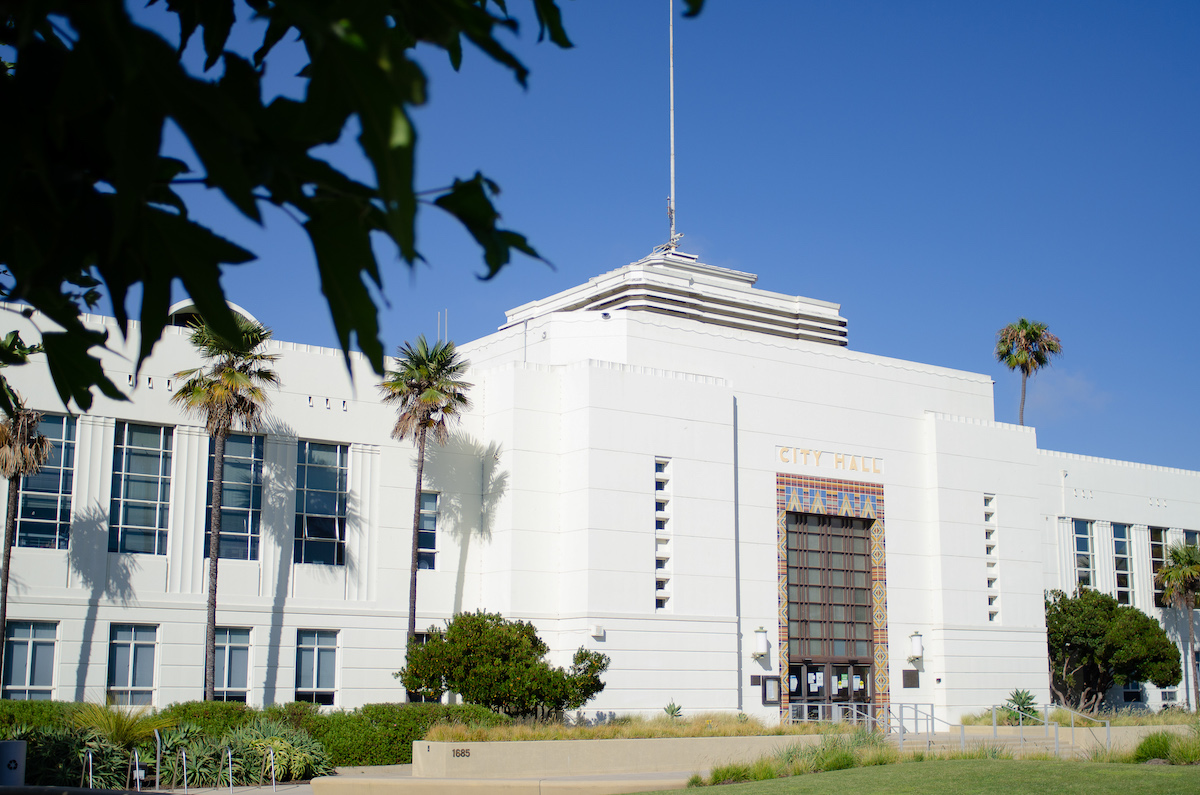Samuel Tolkin for SMa.r.t (Santa Monica Architects for a Responsible Tomorrow) Thane Roberts AIA, Robert H. Taylor AIA, Daniel Jansenson Architect , Building and Fire-Life Safety Commission, Ron Goldman FAIA, Samuel Tolkin Architect, Mario Fonda-Bonardi AIA, Planning Commissioner, Phil Brock, Arts Commissioner.
The Santa Monica Pier is a major cultural asset for the City as it is for the whole of Southern California. The City perhaps doesn’t benefit so much directly in cash from its existence as much as from the cash infusion to the other commercial businesses which make up our downtown.
Let me start by first stating that as an architect my professional relationship with the Pier started back when Sinbad’s waterfront bar was a hulk of rotting wood asking to be resurrected in the form of a bistro/nightclub by the then development people i.e. the Pier Restoration Corporation. At that time there were big plans to revitalize the whole pier as an upscale shopping venue by the seaside. The Pier as an entertainment venue, or ”pleasure pier,” is why in 1983 it was listed on the National Registry of Historic Landmarks. This designation helped to maintain the atmosphere of the Pier and in particular the character of the Carousel Building.
Today, there are new challenges. With the Expo line bringing more visitors and a general increase in tourism there is the need to enhance the vehicular, bike and pedestrian access to the Pier. I have seen two studies commissioned by the City for replacement of the existing pier bridge. The study done by ROMA Design Group (see figure 1) shows a well-conceived solution of separate ramps for vehicles, pedestrians and bikes, and a second access to the parking area. Neither study considers the option of banning all private cars from the pier entirely. Obviously, cars and crowds create safety and security concerns, especially in the current climate of terror threats. For example, on the 11th of this September the pier was evacuated because of a bomb scare. We are also vulnerable to a Las Vegas-type tragedy.
The solution to this real threat is a multi-ramp one with no access for private vehicles. Pedestrians and bikes on one, and another for small mini-buses serving the hotels, service vehicles (trash and deliveries), police and fire only.
The study done by ROMA Design Group suggests the possibility of an elevator or escalators for handicap access. That should not be an option but a requirement. If necessary in lieu of pier deck parking, a parking structure at the beach over the city yards could be considered. The ROMA plan shows numbered areas called “Opportunity Areas”. Given the excessive development proposed in our Downtown Community Plan’s “Opportunity Sites” we should be concerned about the nature and scale of their future uses. The Pier Board is responsible for the recommendation and approval of leases and should ensure that those leases reflect the historical nature of the Pier and reserve Pier space for only those uses which reflect its low-cost entertainment and “honky tonk” carnival like atmosphere. Upscale retail doesn’t belong.
That structure and the new ramps should be designed to account for the sea level rise associated with global warming. I found nothing in either study to address this issue. Its effects will have significant impacts on the piers operational systems, i.e. water, sewer, fire suppression, etc. Further, the very sub-structure of the Pier will be challenged by rising seas and the frequency and magnitude of storms. The sea level in our local is expected to rise some 4 to 5 feet by the end of this century. Structural parts of the Pier which have seen little erosion from tidal and storm wave action will now be impacted.
The police sub-station should be maintained and enlarged, and the harbor patrol office raised at least a full level to provide greater visibility for the police and the harbor staff (see figure 2).
The City’s Engineering Department has a long-term program of inspection and replacement of the existing wood piles and sub-structure. Their replacement by concrete piles should be a priority, as should the redesign and rebuilding of the original breakwater. This can help mitigate the effects of some storms or even some seismic wave action.
It is incumbent on the Pier Board to advise the Council to expedite the remedial work necessary to the Pier structure and further initiate the accessibility measures so that the Pier will survive and prosper into the 22st century.















